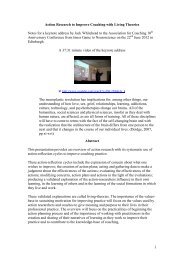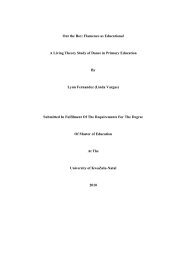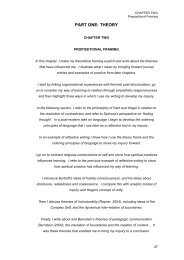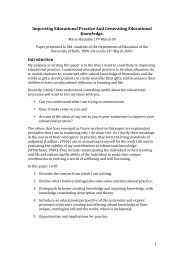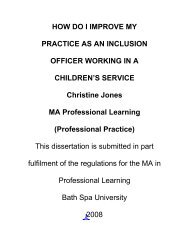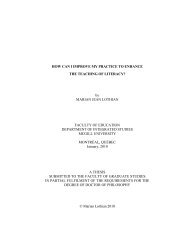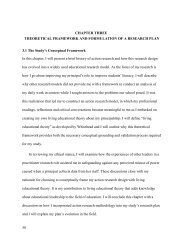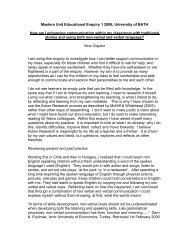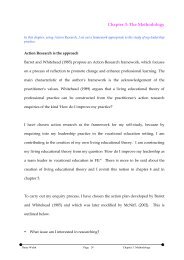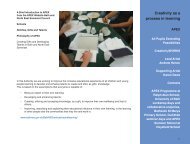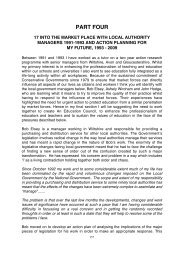Action research transcends constraints of poverty in elementary ...
Action research transcends constraints of poverty in elementary ...
Action research transcends constraints of poverty in elementary ...
Create successful ePaper yourself
Turn your PDF publications into a flip-book with our unique Google optimized e-Paper software.
have met <strong>in</strong> SKYPE conferences as the whole group <strong>of</strong> 4 (four) and assmaller groups, record<strong>in</strong>g and upload<strong>in</strong>g the video clips to Youtube. Onceon Youtube, they were available to us for data collection, for review <strong>in</strong>data analysis, for edit<strong>in</strong>g for length and for smaller clips to show evidence<strong>of</strong> particular themes, concerns or revelations. In this collaborativeprocess, the authors have acted as critical friends for each other <strong>in</strong> a safespace for risk and vulnerability. Costa and Kallica (1993) describe acritical friend as:A critical friend can be def<strong>in</strong>ed as a trusted person who asksprovocative questions, provides data to be exam<strong>in</strong>ed throughanother lens, and <strong>of</strong>fers critiques <strong>of</strong> a person’s work as a friend.A critical friend takes the time to fully understand the context <strong>of</strong>the work presented and the outcomes that the person or group iswork<strong>in</strong>g toward. The friend is an advocate for the success <strong>of</strong> thatwork. (p.90)Marshall (1999) describes the art <strong>of</strong> f<strong>in</strong>d<strong>in</strong>g themes <strong>in</strong> a personal <strong>in</strong>quiry:Images, phrases, concepts and questions around which I organisemy sense <strong>of</strong> <strong>in</strong>quir<strong>in</strong>g can arise from a variety <strong>of</strong> sources, butwhen they ‘appear’ they can have an <strong>in</strong>tensity which makes merecognise them as powerful, or <strong>in</strong>vest them with such power.They have an evocative quality for me, repeatedly catch myattention, and/or are rich phrases (<strong>of</strong>ten with ambiguous ormultiple mean<strong>in</strong>gs) which echo <strong>in</strong> different areas <strong>of</strong> my life.They serve as organiz<strong>in</strong>g frames for my self-reflection and fortak<strong>in</strong>g issues further conceptually and <strong>in</strong> practice. Typically theyhave been repeated <strong>in</strong> more than one sett<strong>in</strong>g. Sometimes I will beencouraged because they have resonance for other people as wellas me, but sometimes this is unimportant. (Marshall 1999, p.4)The technique for strengthen<strong>in</strong>g the validity <strong>of</strong> <strong>research</strong> accounts <strong>in</strong>volvesvalidation groups <strong>of</strong> peers us<strong>in</strong>g questions derived from Habermas’(1976, pp. 2-3) four criteria <strong>of</strong> social validity <strong>in</strong> communication andsocial evolution <strong>of</strong> comprehensibility, rightness, truth and authenticity.What we do is to submit our evidence-based explanations <strong>of</strong> educational<strong>in</strong>fluence to validation groups that are usually formed with between 3-8peers. We ask our peers to <strong>in</strong>clude <strong>in</strong> their comments responses to fourquestions that focus on:i) How could I improve the comprehensibility <strong>of</strong> my explanation?ii) How could I strengthen the evidence I use to justify the assertions Imake?



